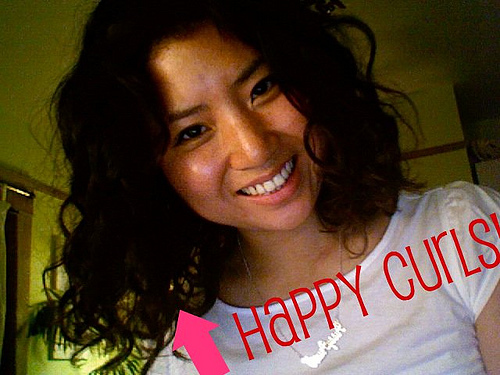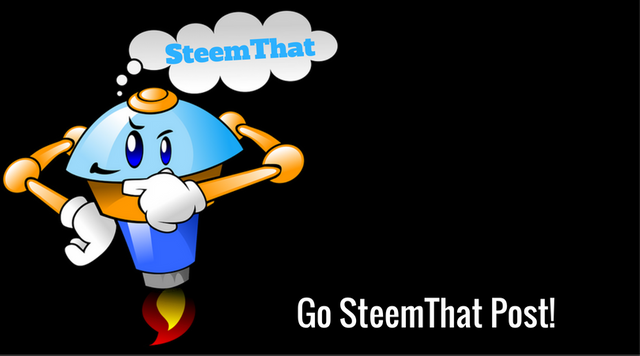

"When you're quantifying and systems are more dynamic, especially systems that involve human beings, forces are complex and unpredictable, and these are things that we don't know how to model so well. Once you predict something about human behavior, new factors emerge, because conditions are constantly changing. "
Transcript:
In ancient Greece, when anyone from slaves to soldiers, poets and politicians, needed to make a big decision on life's most important questions, like, "Should I get married?" or "Should we embark on this voyage?" or "Should our army advance into this territory?" they all consulted the oracle.
00:32
So this is how it worked: you would bring her a question and you would get on your knees, and then she would go into this trance. It would take a couple of days, and then eventually she would come out of it, giving you her predictions as your answer.
00:46
From the oracle bones of ancient China to ancient Greece to Mayan calendars, people have craved for prophecy in order to find out what's going to happen next. And that's because we all want to make the right decision. We don't want to miss something. The future is scary, so it's much nicer knowing that we can make a decision with some assurance of the outcome.
01:10
Well, we have a new oracle, and it's name is big data, or we call it "Watson" or "deep learning" or "neural net." And these are the kinds of questions we ask of our oracle now, like, "What's the most efficient way to ship these phones from China to Sweden?" Or, "What are the odds of my child being born with a genetic disorder?" Or, "What are the sales volume we can predict for this product?"
01:39
I have a dog. Her name is Elle, and she hates the rain. And I have tried everything to untrain her. But because I have failed at this, I also have to consult an oracle, called Dark Sky, every time before we go on a walk, for very accurate weather predictions in the next 10 minutes. She's so sweet. So because of all of this, our oracle is a $122 billion industry.
02:09
Now, despite the size of this industry, the returns are surprisingly low. Investing in big data is easy, but using it is hard. Over 73 percent of big data projects aren't even profitable, and I have executives coming up to me saying, "We're experiencing the same thing. We invested in some big data system, and our employees aren't making better decisions. And they're certainly not coming up with more breakthrough ideas."
02:38
So this is all really interesting to me, because I'm a technology ethnographer. I study and I advise companies on the patterns of how people use technology, and one of my interest areas is data. So why is having more data not helping us make better decisions, especially for companies who have all these resources to invest in these big data systems? Why isn't it getting any easier for them?
03:05
So, I've witnessed the struggle firsthand. In 2009, I started a research position with Nokia. And at the time, Nokia was one of the largest cell phone companies in the world, dominating emerging markets like China, Mexico and India -- all places where I had done a lot of research on how low-income people use technology. And I spent a lot of extra time in China getting to know the informal economy. So I did things like working as a street vendor selling dumplings to construction workers. Or I did fieldwork, spending nights and days in internet cafés, hanging out with Chinese youth, so I could understand how they were using games and mobile phones and using it between moving from the rural areas to the cities.
03:50
Through all of this qualitative evidence that I was gathering, I was starting to see so clearly that a big change was about to happen among low-income Chinese people. Even though they were surrounded by advertisements for luxury products like fancy toilets -- who wouldn't want one? -- and apartments and cars, through my conversations with them, I found out that the ads the actually enticed them the most were the ones for iPhones, promising them this entry into this high-tech life. And even when I was living with them in urban slums like this one, I saw people investing over half of their monthly income into buying a phone, and increasingly, they were "shanzhai," which are affordable knock-offs of iPhones and other brands. They're very usable. Does the job.
04:44
And after years of living with migrants and working with them and just really doing everything that they were doing, I started piecing all these data points together -- from the things that seem random, like me selling dumplings, to the things that were more obvious, like tracking how much they were spending on their cell phone bills. And I was able to create this much more holistic picture of what was happening. And that's when I started to realize that even the poorest in China would want a smartphone, and that they would do almost anything to get their hands on one.
05:20
You have to keep in mind, iPhones had just come out, it was 2009, so this was, like, eight years ago, and Androids had just started looking like iPhones. And a lot of very smart and realistic people said, "Those smartphones -- that's just a fad. Who wants to carry around these heavy things where batteries drain quickly and they break every time you drop them?" But I had a lot of data, and I was very confident about my insights, so I was very excited to share them with Nokia.
05:53
But Nokia was not convinced, because it wasn't big data. They said, "We have millions of data points, and we don't see any indicators of anyone wanting to buy a smartphone, and your data set of 100, as diverse as it is, is too weak for us to even take seriously." And I said, "Nokia, you're right. Of course you wouldn't see this, because you're sending out surveys assuming that people don't know what a smartphone is, so of course you're not going to get any data back about people wanting to buy a smartphone in two years. Your surveys, your methods have been designed to optimize an existing business model, and I'm looking at these emergent human dynamics that haven't happened yet. We're looking outside of market dynamics so that we can get ahead of it." Well, you know what happened to Nokia? Their business fell off a cliff. This -- this is the cost of missing something. It was unfathomable.
06:51
But Nokia's not alone. I see organizations throwing out data all the time because it didn't come from a quant model or it doesn't fit in one. But it's not big data's fault. It's the way we use big data; it's our responsibility. Big data's reputation for success comes from quantifying very specific environments, like electricity power grids or delivery logistics or genetic code, when we're quantifying in systems that are more or less contained.
07:24
But not all systems are as neatly contained. When you're quantifying and systems are more dynamic, especially systems that involve human beings, forces are complex and unpredictable, and these are things that we don't know how to model so well. Once you predict something about human behavior, new factors emerge, because conditions are constantly changing. That's why it's a never-ending cycle. You think you know something, and then something unknown enters the picture. And that's why just relying on big data alone increases the chance that we'll miss something, while giving us this illusion that we already know everything.
08:04
And what makes it really hard to see this paradox and even wrap our brains around it is that we have this thing that I call the quantification bias, which is the unconscious belief of valuing the measurable over the immeasurable. And we often experience this at our work. Maybe we work alongside colleagues who are like this, or even our whole entire company may be like this, where people become so fixated on that number, that they can't see anything outside of it, even when you present them evidence right in front of their face. And this is a very appealing message, because there's nothing wrong with quantifying; it's actually very satisfying. I get a great sense of comfort from looking at an Excel spreadsheet, even very simple ones.
08:51
(Laughter)
08:53
It's just kind of like, "Yes! The formula worked. It's all OK. Everything is under control."
08:58
But the problem is that quantifying is addictive. And when we forget that and when we don't have something to kind of keep that in check, it's very easy to just throw out data because it can't be expressed as a numerical value. It's very easy just to slip into silver-bullet thinking, as if some simple solution existed. Because this is a great moment of danger for any organization, because oftentimes, the future we need to predict -- it isn't in that haystack, but it's that tornado that's bearing down on us outside of the barn. There is no greater risk than being blind to the unknown. It can cause you to make the wrong decisions. It can cause you to miss something big.
09:43
But we don't have to go down this path. It turns out that the oracle of ancient Greece holds the secret key that shows us the path forward. Now, recent geological research has shown that the Temple of Apollo, where the most famous oracle sat, was actually built over two earthquake faults. And these faults would release these petrochemical fumes from underneath the Earth's crust, and the oracle literally sat right above these faults, inhaling enormous amounts of ethylene gas, these fissures.
10:16
(Laughter)
10:17
It's true.
10:19
(Laughter) It's all true, and that's what made her babble and hallucinate and go into this trance-like state. She was high as a kite!
10:27
(Laughter)
10:31
So how did anyone -- How did anyone get any useful advice out of her in this state? Well, you see those people surrounding the oracle? You see those people holding her up, because she's, like, a little woozy? And you see that guy on your left-hand side holding the orange notebook? Well, those were the temple guides, and they worked hand in hand with the oracle. When inquisitors would come and get on their knees, that's when the temple guides would get to work, because after they asked her questions, they would observe their emotional state, and then they would ask them follow-up questions, like, "Why do you want to know this prophecy? Who are you? What are you going to do with this information?" And then the temple guides would take this more ethnographic, this more qualitative information, and interpret the oracle's babblings. So the oracle didn't stand alone, and neither should our big data systems.
11:26
Now to be clear, I'm not saying that big data systems are huffing ethylene gas, or that they're even giving invalid predictions. The total opposite. But what I am saying is that in the same way that the oracle needed her temple guides, our big data systems need them, too. They need people like ethnographers and user researchers who can gather what I call thick data. This is precious data from humans, like stories, emotions and interactions that cannot be quantified. It's the kind of data that I collected for Nokia that comes in in the form of a very small sample size, but delivers incredible depth of meaning.
12:05
And what makes it so thick and meaty is the experience of understanding the human narrative. And that's what helps to see what's missing in our models. Thick data grounds our business questions in human questions, and that's why integrating big and thick data forms a more complete picture. Big data is able to offer insights at scale and leverage the best of machine intelligence, whereas thick data can help us rescue the context loss that comes from making big data usable, and leverage the best of human intelligence. And when you actually integrate the two, that's when things get really fun, because then you're no longer just working with data you've already collected. You get to also work with data that hasn't been collected. You get to ask questions about why: Why is this happening?
12:55
Now, when Netflix did this, they unlocked a whole new way to transform their business. Netflix is known for their really great recommendation algorithm, and they had this $1 million prize for anyone who could improve it. And there were winners. But Netflix discovered the improvements were only incremental. So to really find out what was going on, they hired an ethnographer, Grant McCracken, to gather thick data insights. And what he discovered was something that they hadn't seen initially in the quantitative data. He discovered that people loved to binge-watch. In fact, people didn't even feel guilty about it. They enjoyed it.
13:37
(Laughter)
13:38
So Netflix was like, "Oh. This is a new insight." So they went to their data science team, and they were able to scale this big data insight in with their quantitative data. And once they verified it and validated it, Netflix decided to do something very simple but impactful. They said, instead of offering the same show from different genres or more of the different shows from similar users, we'll just offer more of the same show. We'll make it easier for you to binge-watch. And they didn't stop there. They did all these things to redesign their entire viewer experience, to really encourage binge-watching. It's why people and friends disappear for whole weekends at a time, catching up on shows like "Master of None." By integrating big data and thick data, they not only improved their business, but they transformed how we consume media. And now their stocks are projected to double in the next few years.
14:38
But this isn't just about watching more videos or selling more smartphones. For some, integrating thick data insights into the algorithm could mean life or death, especially for the marginalized. All around the country, police departments are using big data for predictive policing, to set bond amounts and sentencing recommendations in ways that reinforce existing biases. NSA's Skynet machine learning algorithm has possibly aided in the deaths of thousands of civilians in Pakistan from misreading cellular device metadata. As all of our lives become more automated, from automobiles to health insurance or to employment, it is likely that all of us will be impacted by the quantification bias.
15:32
Now, the good news is that we've come a long way from huffing ethylene gas to make predictions. We have better tools, so let's just use them better. Let's integrate the big data with the thick data. Let's bring our temple guides with the oracles, and whether this work happens in companies or nonprofits or government or even in the software, all of it matters, because that means we're collectively committed to making better data, better algorithms, better outputs and better decisions. This is how we'll avoid missing that something.
16:07
(Applause)

This post received a 1.8% upvote from @randowhale thanks to @tai-euler! For more information, click here!
Downvoting a post can decrease pending rewards and make it less visible. Common reasons:
Submit
very intriguing article. I talked to one of the creative designers for watson a few months ago, and the future will be amazing with what they have planned. Love your passion, so now following you, and have upvoted as well.
Downvoting a post can decrease pending rewards and make it less visible. Common reasons:
Submit
Thank you very much Johnny! I am happy that you liked her talk. I think too, that big data always need thick data to get a proper result. I have read that IBM Watson is not profitable enough. We will see what the future brings. I followed you back!
Downvoting a post can decrease pending rewards and make it less visible. Common reasons:
Submit
You Are An Excellent Steemian. This post has received a 3.85 % upvote from @steemthat Return the favor and SteemThat Person Back: @tai-euler. .
.
Using @steemthat Is Easy. Just Transfer 0.010 to @steemthat and The Steemit Link You Want Upvoted In The Memo.
Downvoting a post can decrease pending rewards and make it less visible. Common reasons:
Submit
This post has received a 1.93 % upvote from @booster thanks to: @tai-euler.
Downvoting a post can decrease pending rewards and make it less visible. Common reasons:
Submit
This post has received a 2.19 % upvote from @drotto thanks to: @binkley.
Downvoting a post can decrease pending rewards and make it less visible. Common reasons:
Submit